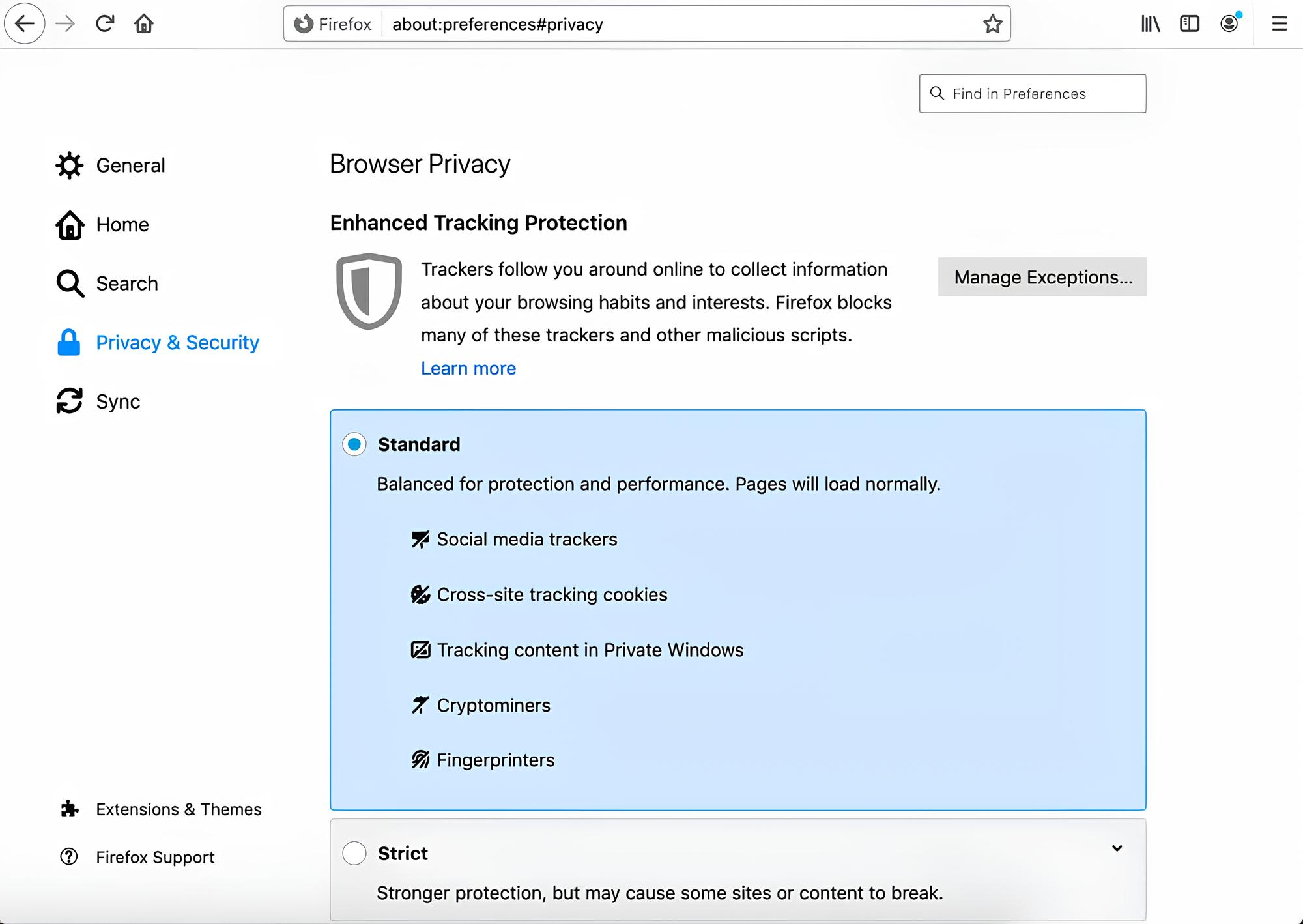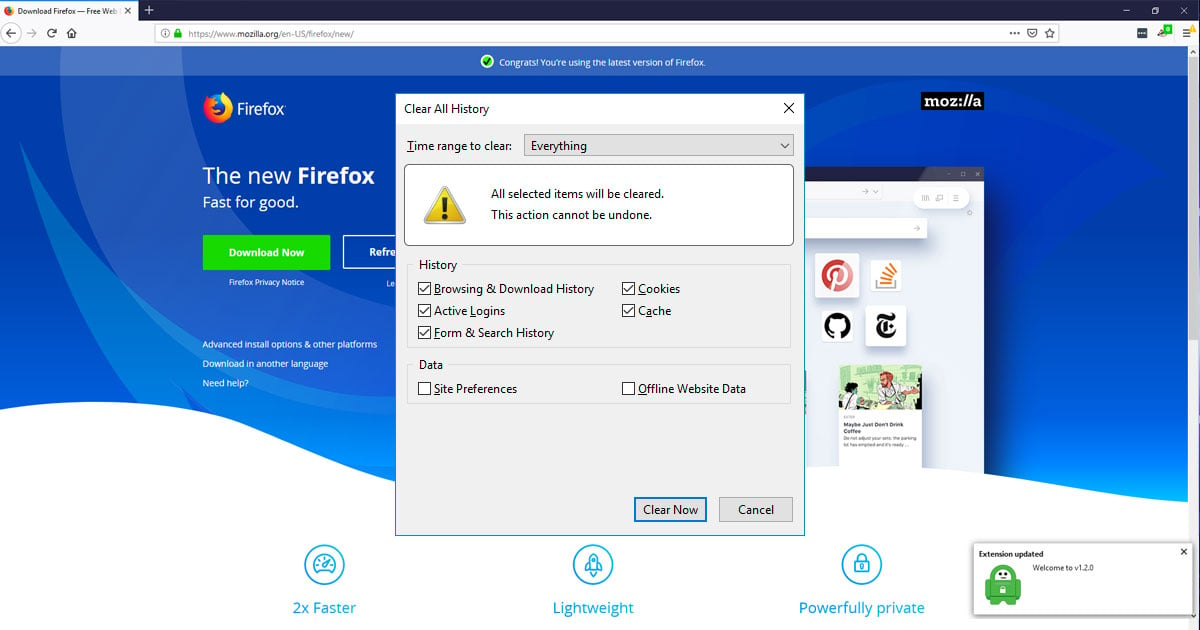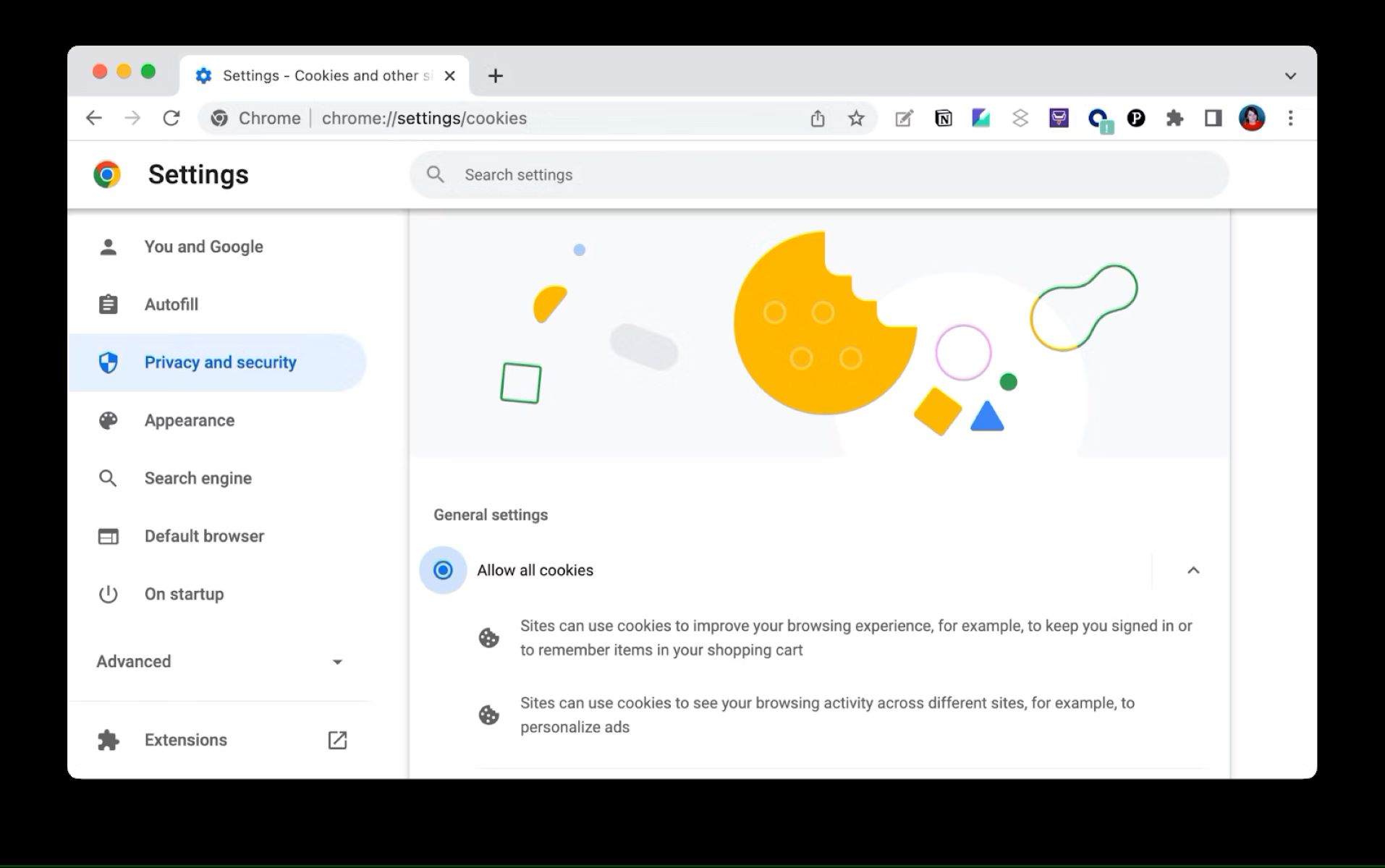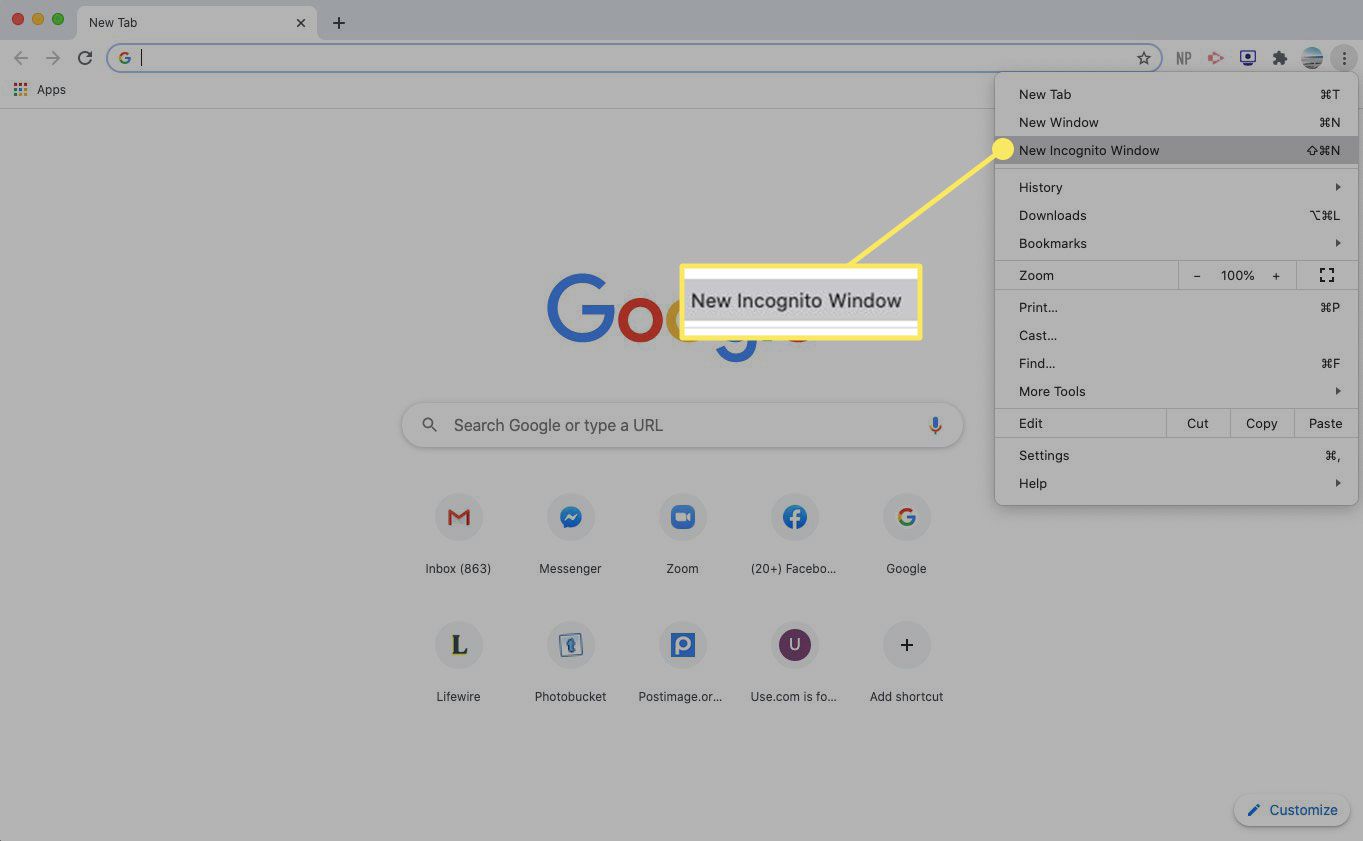Introduction
Mozilla Firefox is a popular web browser known for its user-friendly interface, robust security features, and extensive customization options. One essential aspect of web browsing is the use of cookies, which are small pieces of data stored on your computer by websites to remember your preferences, login information, and browsing history. Enabling cookies in Mozilla Firefox is crucial for a seamless and personalized browsing experience.
In this article, we will guide you through the process of enabling cookies in Mozilla Firefox, ensuring that you can make the most of your online activities without encountering unnecessary hurdles. Whether you're a seasoned Firefox user or a newcomer to this versatile browser, understanding how to manage cookies effectively can significantly enhance your browsing convenience and efficiency.
By following the simple steps outlined in this guide, you will gain the ability to customize your cookie settings according to your preferences, striking a balance between privacy and convenience. Let's embark on this journey to unlock the full potential of Mozilla Firefox by harnessing the power of cookies in a secure and tailored manner.
Step 1: Open Mozilla Firefox
To begin the process of enabling cookies in Mozilla Firefox, you first need to open the browser on your computer. Whether you are using a Windows PC, Mac, or Linux system, launching Firefox is a straightforward task that sets the stage for customizing your browsing experience.
If you are using a Windows PC, you can typically find the Mozilla Firefox icon on your desktop or in the taskbar at the bottom of the screen. Simply double-click on the icon to open the browser. Alternatively, you can access Firefox by clicking on the Windows Start button, locating the Firefox application in the list of installed programs, and selecting it to launch the browser.
For Mac users, locating and opening Mozilla Firefox is equally simple. You can find the Firefox icon in the Applications folder or the Dock. Clicking on the icon will initiate the browser and prepare you for the next steps in managing your cookie settings.
Linux users can open Mozilla Firefox through the application menu or by using the command line, depending on their preferred method of accessing software. Once the browser is launched, you are ready to proceed with the process of enabling cookies and customizing their behavior to suit your browsing needs.
Regardless of your operating system, opening Mozilla Firefox is the initial step that paves the way for a seamless and personalized browsing experience. With the browser now at your fingertips, you are poised to delve into the settings and configurations that will empower you to make the most of cookies while maintaining control over your privacy and security.
Step 2: Access the Settings Menu
Accessing the settings menu in Mozilla Firefox is a fundamental step in customizing your browsing experience, including enabling and managing cookies. The settings menu serves as a central hub for configuring various aspects of the browser, allowing users to tailor their preferences to align with their specific needs and requirements.
To access the settings menu in Mozilla Firefox, you can follow these simple steps:
-
Open Mozilla Firefox: As outlined in the previous step, ensure that Mozilla Firefox is open and running on your computer. If the browser is not already launched, refer to Step 1 for guidance on initiating Mozilla Firefox on your respective operating system.
-
Locate the Menu Icon: At the top-right corner of the Firefox window, you will find an icon consisting of three horizontal lines, symbolizing the menu. This icon serves as the gateway to a plethora of options for customizing your browsing experience.
-
Click on the Menu Icon: Once you have located the menu icon, click on it to reveal a dropdown menu containing various categories and settings. This action opens the door to a world of possibilities for fine-tuning your Firefox preferences.
-
Navigate to Options: Within the dropdown menu, you will find an option labeled "Options." Click on this option to access the settings menu, where you can delve into the intricacies of Firefox's configurations and features.
-
Explore Advanced Settings: Upon entering the settings menu, you will encounter a range of tabs and categories on the left-hand side of the window. To manage cookies and privacy settings effectively, you can navigate to the "Privacy & Security" tab, which houses advanced options for controlling how Firefox handles cookies and other website data.
By following these steps, you can seamlessly access the settings menu in Mozilla Firefox, empowering yourself to fine-tune the browser's behavior to align with your preferences and requirements. With the settings menu at your disposal, you are now ready to proceed to the next steps in enabling and customizing cookies to enhance your browsing experience.
Step 3: Navigate to Privacy & Security
In the quest to enable cookies and manage privacy settings effectively, navigating to the "Privacy & Security" tab within the Mozilla Firefox settings menu is a pivotal step. This section serves as the gateway to a myriad of options that allow users to exert control over how their browsing data is handled, including the management of cookies and site data.
Upon accessing the settings menu, you will encounter a range of tabs and categories on the left-hand side of the window. Among these, the "Privacy & Security" tab stands out as a focal point for configuring Firefox's behavior regarding cookies, tracking protection, and other privacy-related features.
Within the "Privacy & Security" tab, you will find a wealth of options that enable you to customize your browsing experience according to your preferences and privacy concerns. The subsections under this tab encompass essential features such as tracking protection, permissions, and security settings, all of which play a crucial role in shaping your interaction with websites and online services.
One of the key components housed within the "Privacy & Security" tab is the "Cookies and Site Data" section. Here, users can fine-tune their cookie preferences, including the ability to enable or disable cookies, manage exceptions for specific websites, and configure advanced settings related to cookie storage and behavior.
By navigating to the "Privacy & Security" tab and delving into the intricacies of the "Cookies and Site Data" section, users can gain granular control over how Firefox interacts with cookies, thereby shaping their online experiences to align with their individual needs and privacy preferences.
In essence, the journey to the "Privacy & Security" tab within the Mozilla Firefox settings menu represents a pivotal moment in the quest to harness the power of cookies while maintaining a firm grip on privacy and security. By exploring the options presented within this section, users can embark on a personalized and secure browsing experience, fortified by the ability to tailor cookie settings to their liking.
With the roadmap to the "Privacy & Security" tab now laid out, users are poised to delve into the next steps of enabling cookies and customizing their behavior within Mozilla Firefox, thereby unlocking the full potential of this versatile browser in a secure and tailored manner.
Step 4: Enable Cookies
Enabling cookies in Mozilla Firefox is a pivotal step in shaping your browsing experience to align with your preferences and requirements. By allowing websites to store and retrieve small pieces of data, known as cookies, you can enjoy personalized content, seamless logins, and enhanced functionality across various online platforms. To enable cookies in Mozilla Firefox, follow these simple steps:
-
Navigate to the "Privacy & Security" Tab: As outlined in the previous step, access the settings menu in Mozilla Firefox and navigate to the "Privacy & Security" tab. This section serves as the central hub for configuring privacy-related features, including cookie settings.
-
Locate the "Cookies and Site Data" Section: Within the "Privacy & Security" tab, you will find the "Cookies and Site Data" section, which houses options for managing how Firefox handles cookies and website data.
-
Enable Cookies: To enable cookies, ensure that the checkbox next to "Accept cookies and site data from websites (recommended)" is checked. This action signifies your consent to allow websites to store and retrieve cookies, thereby enhancing your browsing experience.
By following these steps, you can seamlessly enable cookies in Mozilla Firefox, empowering yourself to enjoy a personalized and convenient online journey. With cookies now enabled, you are poised to explore the next steps in customizing your cookie settings to strike a balance between privacy and convenience.
Enabling cookies in Mozilla Firefox is a simple yet impactful endeavor that opens the door to a world of personalized content, seamless logins, and enhanced functionality across various online platforms. By embracing the power of cookies in a secure and tailored manner, users can elevate their browsing experiences while maintaining control over their privacy and security.
Step 5: Customize Cookie Settings
Customizing cookie settings in Mozilla Firefox empowers users to fine-tune the behavior of cookies according to their individual preferences and privacy considerations. By delving into the advanced options available within the browser, users can exert granular control over how cookies are stored, managed, and interacted with, thereby shaping their online experiences in a personalized and secure manner.
Upon enabling cookies, users can further customize their cookie settings by accessing the advanced options within the "Cookies and Site Data" section of the "Privacy & Security" tab. Here's a detailed exploration of the steps involved in customizing cookie settings in Mozilla Firefox:
Manage Cookie Storage
Mozilla Firefox provides users with the ability to manage cookie storage, allowing them to specify how long cookies are retained and whether they are deleted upon exiting the browser. By navigating to the "Manage Data…" option within the "Cookies and Site Data" section, users can view and manage the cookies stored by various websites, including the option to remove specific cookies or clear all stored data.
Set Cookie Permissions for Specific Websites
Customizing cookie settings in Firefox extends to setting permissions for specific websites, enabling users to control how cookies are handled on a site-by-site basis. By accessing the "Manage Permissions…" option within the "Cookies and Site Data" section, users can define exceptions for individual websites, specifying whether they can store cookies, access site data, and utilize other tracking features.
Configure Enhanced Tracking Protection
Mozilla Firefox offers Enhanced Tracking Protection as a robust privacy feature that empowers users to block known trackers, thereby enhancing their online privacy. Within the "Privacy & Security" tab, users can access the Enhanced Tracking Protection settings to customize the level of protection against trackers, including the option to block trackers in all windows or only in private windows.
Utilize Custom Cookie Settings
For users seeking advanced control over cookie behavior, Mozilla Firefox allows the utilization of custom cookie settings, enabling the configuration of exceptions, cross-site tracking protection, and other nuanced preferences. By exploring the "Custom" option within the "Cookies and Site Data" section, users can tailor their cookie settings to align with their specific privacy and security requirements.
By customizing cookie settings in Mozilla Firefox, users can embark on a tailored and secure browsing experience, fortified by the ability to shape the behavior of cookies according to their individual preferences. This granular control over cookie management empowers users to strike a balance between privacy and convenience, ensuring that their online interactions are personalized, seamless, and safeguarded.
With the ability to customize cookie settings in Mozilla Firefox, users can harness the full potential of cookies while maintaining a firm grip on their privacy and security. This personalized approach to cookie management sets the stage for a seamless and secure browsing journey, where users can enjoy the benefits of cookies while retaining control over their online footprint.
Conclusion
In conclusion, the process of enabling and customizing cookies in Mozilla Firefox is a pivotal endeavor that empowers users to shape their online experiences in a personalized, secure, and efficient manner. By following the simple yet impactful steps outlined in this guide, users can unlock the full potential of cookies while maintaining control over their privacy and security.
Enabling cookies in Mozilla Firefox serves as the gateway to a world of personalized content, seamless logins, and enhanced functionality across various online platforms. By allowing websites to store and retrieve small pieces of data, users can enjoy a tailored browsing experience that caters to their individual preferences and requirements.
Furthermore, customizing cookie settings within Mozilla Firefox provides users with granular control over how cookies are stored, managed, and interacted with. From managing cookie storage and setting permissions for specific websites to configuring enhanced tracking protection and utilizing custom cookie settings, users can fine-tune their browsing experiences to strike a balance between privacy and convenience.
By navigating to the "Privacy & Security" tab and delving into the intricacies of the "Cookies and Site Data" section, users can embark on a journey towards a secure and tailored browsing experience. This personalized approach to cookie management ensures that users can enjoy the benefits of cookies while retaining control over their online footprint, thereby shaping their interactions with websites and online services according to their individual preferences.
In essence, the ability to enable and customize cookies in Mozilla Firefox represents a pivotal step in harnessing the power of this versatile browser. By embracing the potential of cookies in a secure and tailored manner, users can elevate their browsing experiences, enjoy personalized content, and maintain control over their privacy and security.
As users navigate the digital landscape, the knowledge and ability to manage cookies effectively in Mozilla Firefox empower them to engage with online platforms in a manner that aligns with their preferences and privacy considerations. This seamless integration of personalized browsing experiences and robust privacy controls underscores the significance of enabling and customizing cookies in Mozilla Firefox, ultimately shaping a more efficient and secure online journey for users worldwide.

























